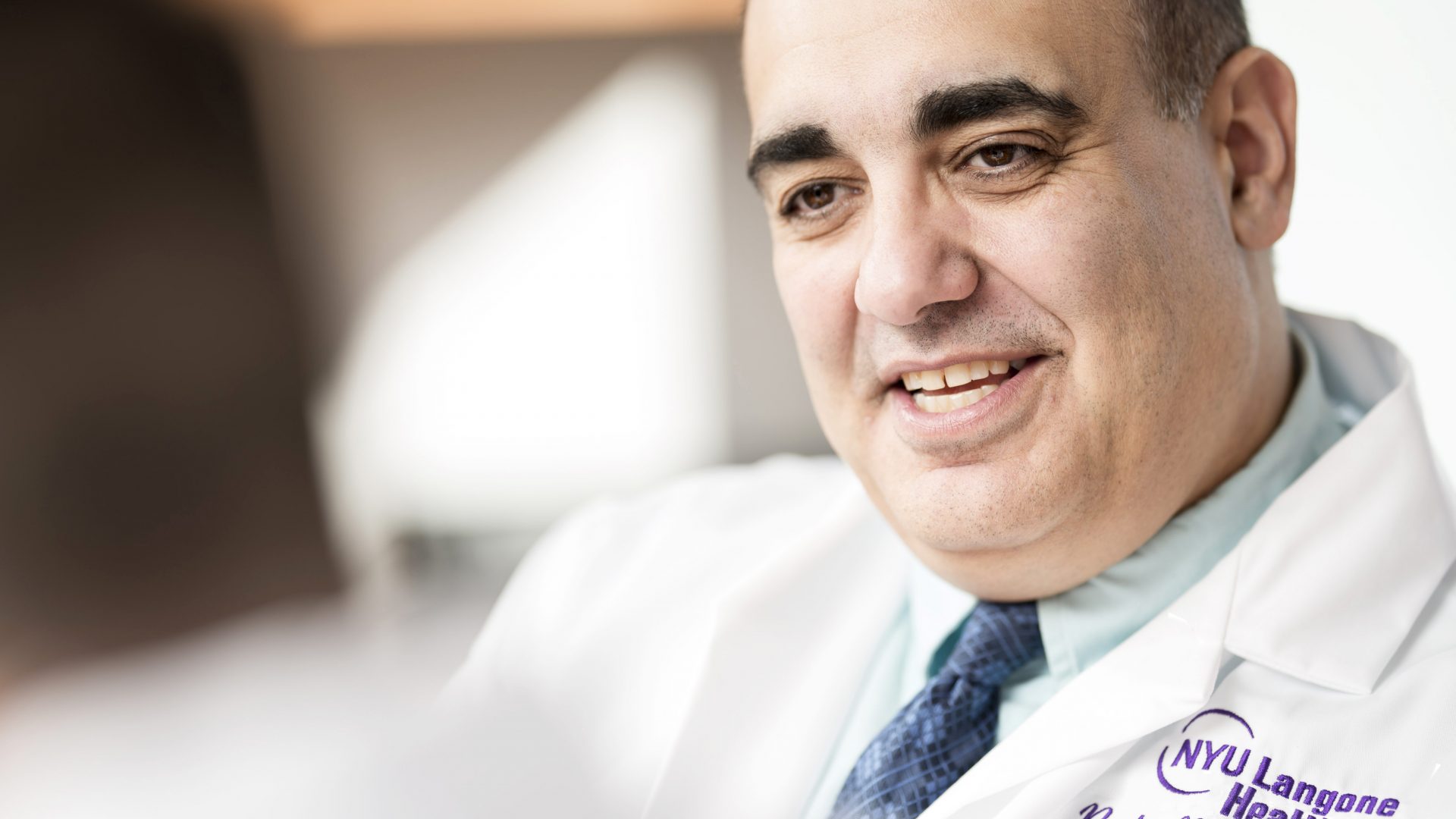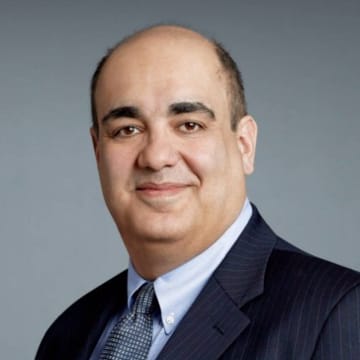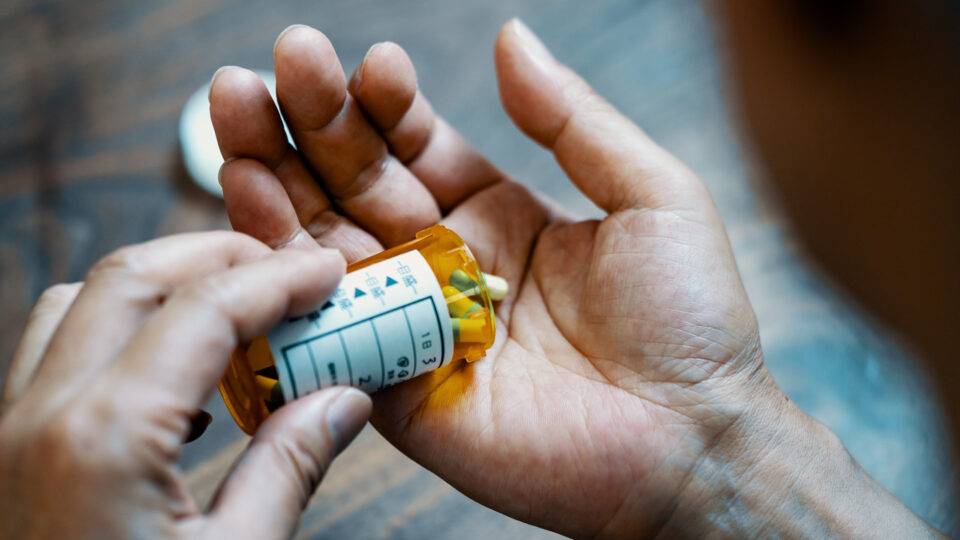The first successful human implantation of an artificial heart took place in 1982. Forty years later, just one such device is available in this country—the SynCardia Total Artificial Heart (TAH), approved in 2004 by the Food and Drug Administration as a bridge to transplantation.
Although a lifesaver for some patients with irreversible biventricular failure, the device is only a stopgap. Researchers have long struggled to develop a TAH capable of permanently replacing a natural heart, and several groups now claim to be close to that goal. Whether they will succeed, however, remains an open question.
Nader Moazami, MD, chief of the Division of Heart and Lung Transplant and Mechanical Circulatory Support, is an internationally recognized expert on circulatory assistive devices. We spoke with him about the state of the TAH—and its future.
“As an aging population spurs growing rates of heart disease, the search has only become more urgent.”
Nader Moazami, MD
Overcoming Engineering Challenges
Physician Focus: A permanent artificial heart has been a holy grail of cardiac surgery since at least the 1960s. Why has it taken so long?
Dr. Moazami: The engineering challenges are mind-boggling, ranging from miniaturization to biocompatability to the need to prevent clotting and hemolysis. But as an aging population spurs growing rates of heart disease, the search has only become more urgent.
The need for a permanent TAH is primarily driven by patients with end-stage biventricular heart failure who aren’t eligible for transplantation.
But the same technology could benefit transplant-eligible patients as well, by providing better alternatives to the TAH available today.
Physician Focus: The SynCardia TAH has been implanted in about 1,700 patients since its introduction—just over 100 per year. What are its strengths and limitations?
Dr. Moazami: As a bridge to transplant, the SynCardia works reasonably well. But it’s based on technologies and concepts that were current in the 1980s—a pneumatic driver moving a diaphragm to create a pulsatile flow. It has a high rate of complications. It requires a complex anticoagulant regimen. It’s bulky and noisy. It’s not something that people can live with long term.
For all these reasons, the device continues to have a limited application.
Physician Focus: Should next-generation TAHs adopt the continuous-flow model?
Dr. Moazami: There are some strong arguments for doing so. As we’ve seen with left ventricular assist devices (LVADs), continuous-flow (CF) rotary pumps provide increased mechanical reliability, smaller size, and better overall patient outcomes than volume-displacement pulsatile-flow technology.
However, CF LVADs are also associated with complications such as arteriovenous malformations, bleeding, and hemmorhagic infarcts in some patients. This may reflect the fact that all our organs—the gut, liver, kidneys, brain—evolved to respond to pulsatile flow.
So in my opinion, the jury is still out on continuous-flow TAHs.
Assessing Next-Generation TAH Candidates
Physician Focus: Several experimental TAHs are in the running to become the first permanent artificial heart. What should we know about them?
Dr. Moazami: The three candidates that have gotten the most attention are those developed by the Cleveland Clinic, Carmat, and BiVACOR. The Cleveland Clinic TAH was one of the earliest CF artificial hearts; it’s been around for about 10 years. I was involved in testing it preclinically before joining NYU Langone Health, but it has not yet reached the stage of human trials.
BiVACOR is another CF TAH. Its sole moving part is a magnetically suspended spinning disk that acts as a centrifugal pump. The design is meant to enhance durability and reliability, as well as reduce its size. Another unique feature is that this TAH can be programmed to mimic pulsatile flow; it will be interesting to see if that modification improves patient outcomes. But this device, too, is still in the animal-testing stage.
The Carmat TAH is a pulsatile flow device, which uses a hydraulic pump and pressure sensors to regulate blood flow according to patients’ physical activity. European regulators approved it in 2020 as a bridge to transplant, and it entered clinical trials in the United States in 2021.
Again, it’s too soon to say whether one of these candidates is the front-runner.
“For patients who are eligible for a transplant, it’s hard to imagine that any TAH could be a desirable substitute for a biological heart—at least for the foreseeable future.
But for end-stage heart failure patients who aren’t candidates for a transplant, a permanent TAH could be a godsend.”
Nader Moazami, MD
A Solution to the Donor Heart Shortage?
Physician Focus: Some advocates suggest that permanent TAHs could provide an alternative to biological hearts, helping to relieve the persistent shortage of organs for transplantation. How realistic is that expectation?
Dr. Moazami: I’m skeptical. For patients who are eligible for a transplant, it’s hard to imagine that any TAH could be a desirable substitute for a biological heart—at least for the foreseeable future. As long as TAHs need an external drive line, they raise a variety of concerns: infection, difficulty taking a shower, the danger of accidentally tugging on the cable. If these devices can someday be internalized, that might change the equation.
Until then, the most effective way to address the shortage of transplant organs will be to increase the supply of usable donor hearts. NYU Langone Health has been at the forefront of that effort, first by pioneering the use of hepatitis C-positive organs, and more recently by using donation after cardiac death organs. We’re also looking into xenotransplantation of genetically modified pig hearts, building on the Transplant Institute’s recent work with kidneys.
But for end-stage heart failure patients who aren’t candidates for a transplant, a permanent TAH could be a godsend. When an appropriate device becomes available for human testing, we expect to be one of the leading centers investigating it clinically.






